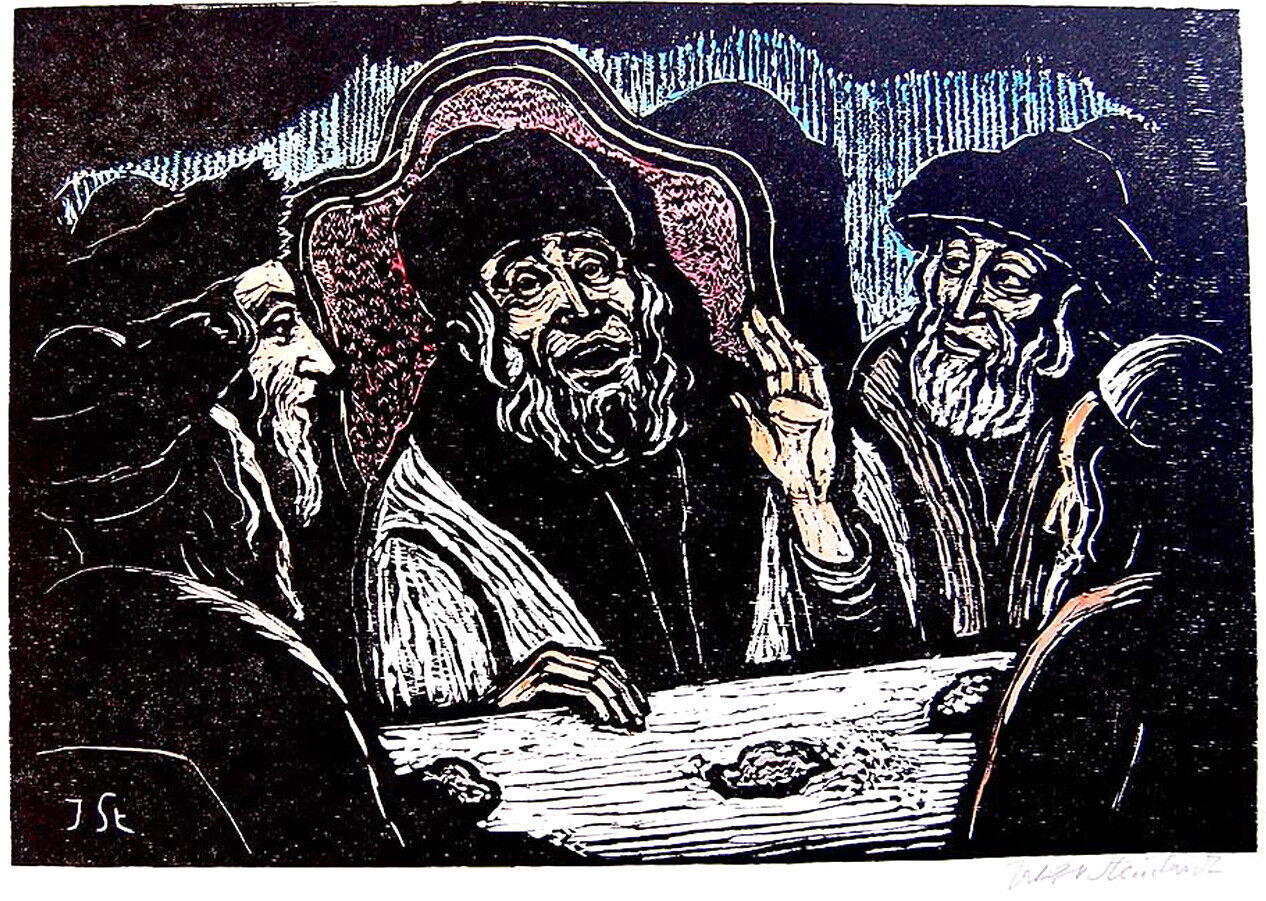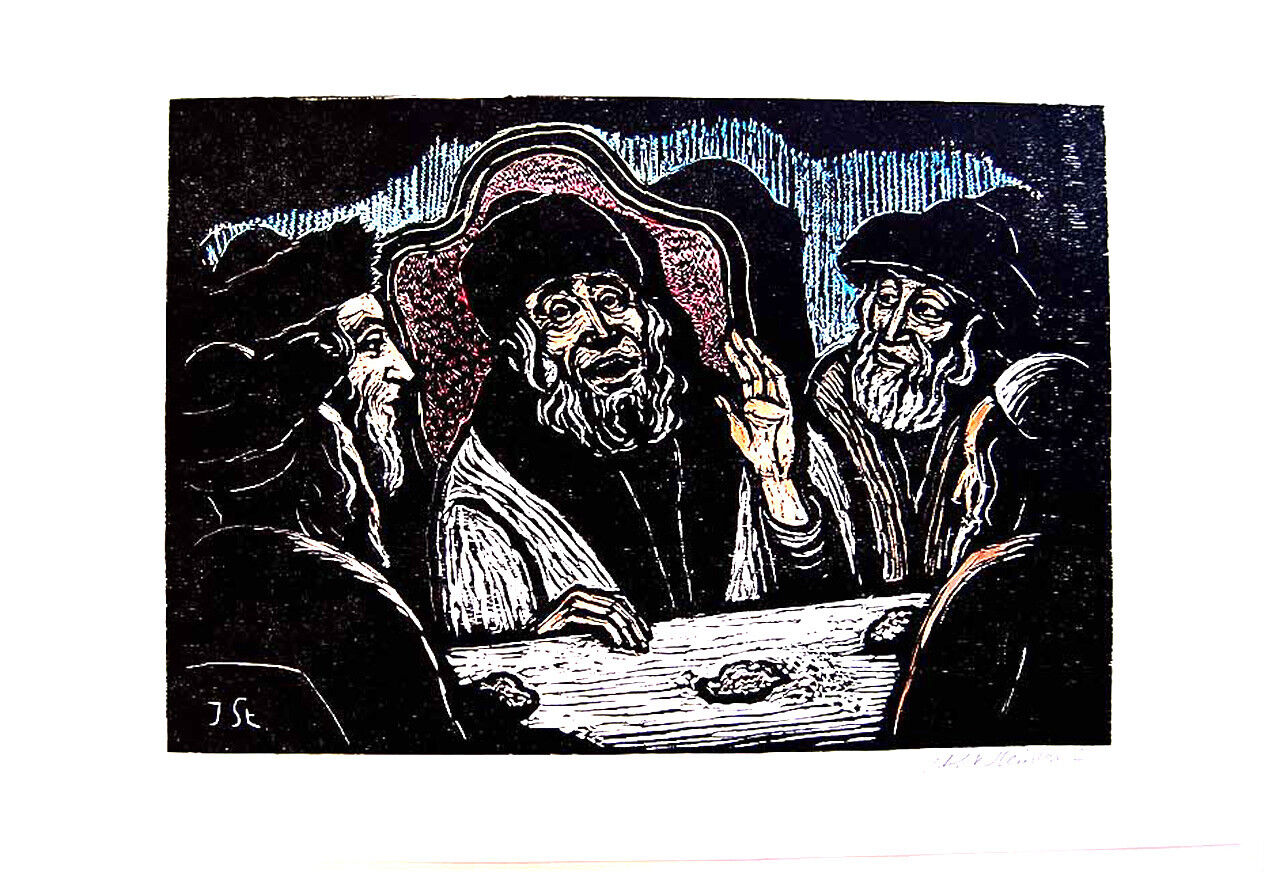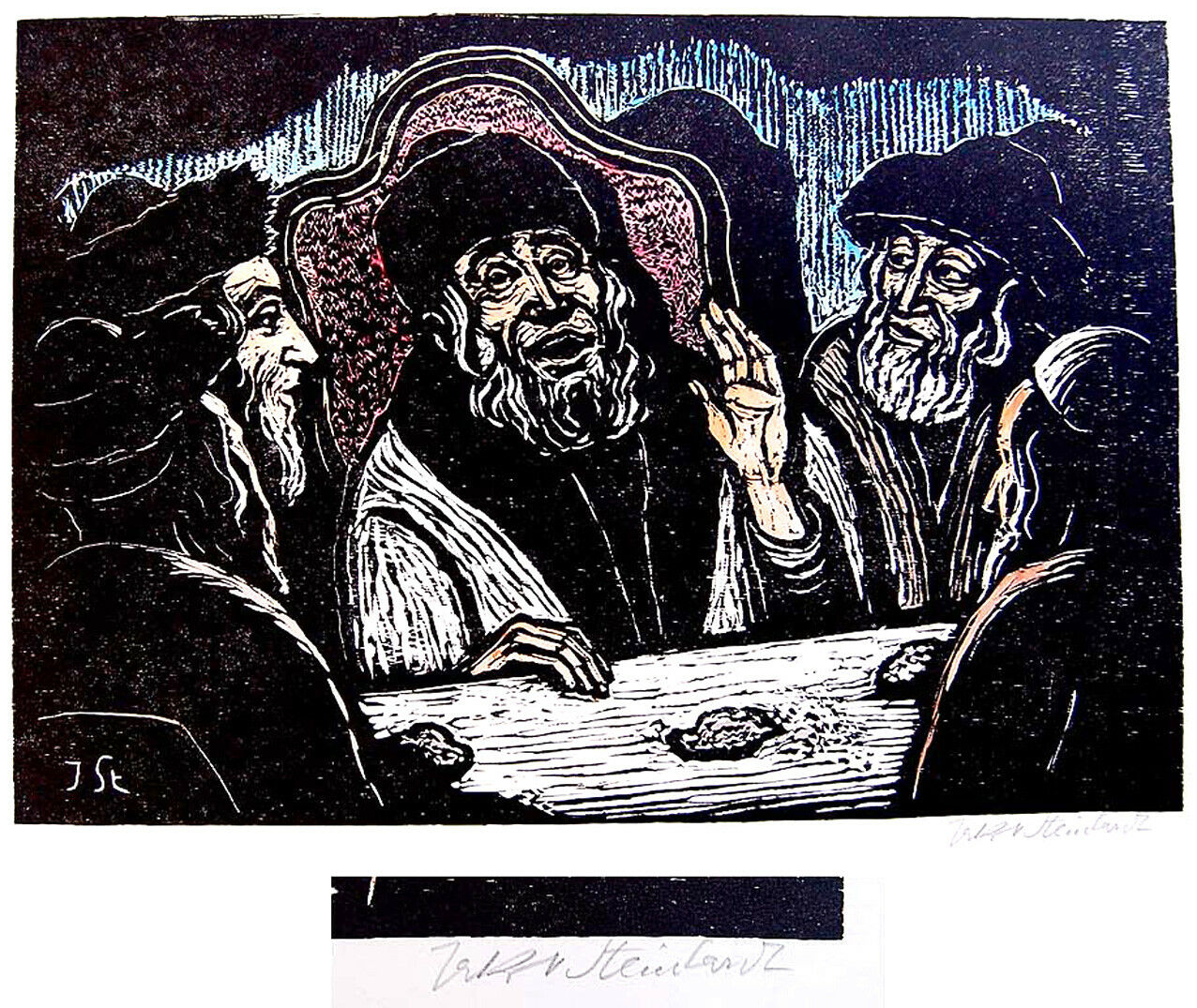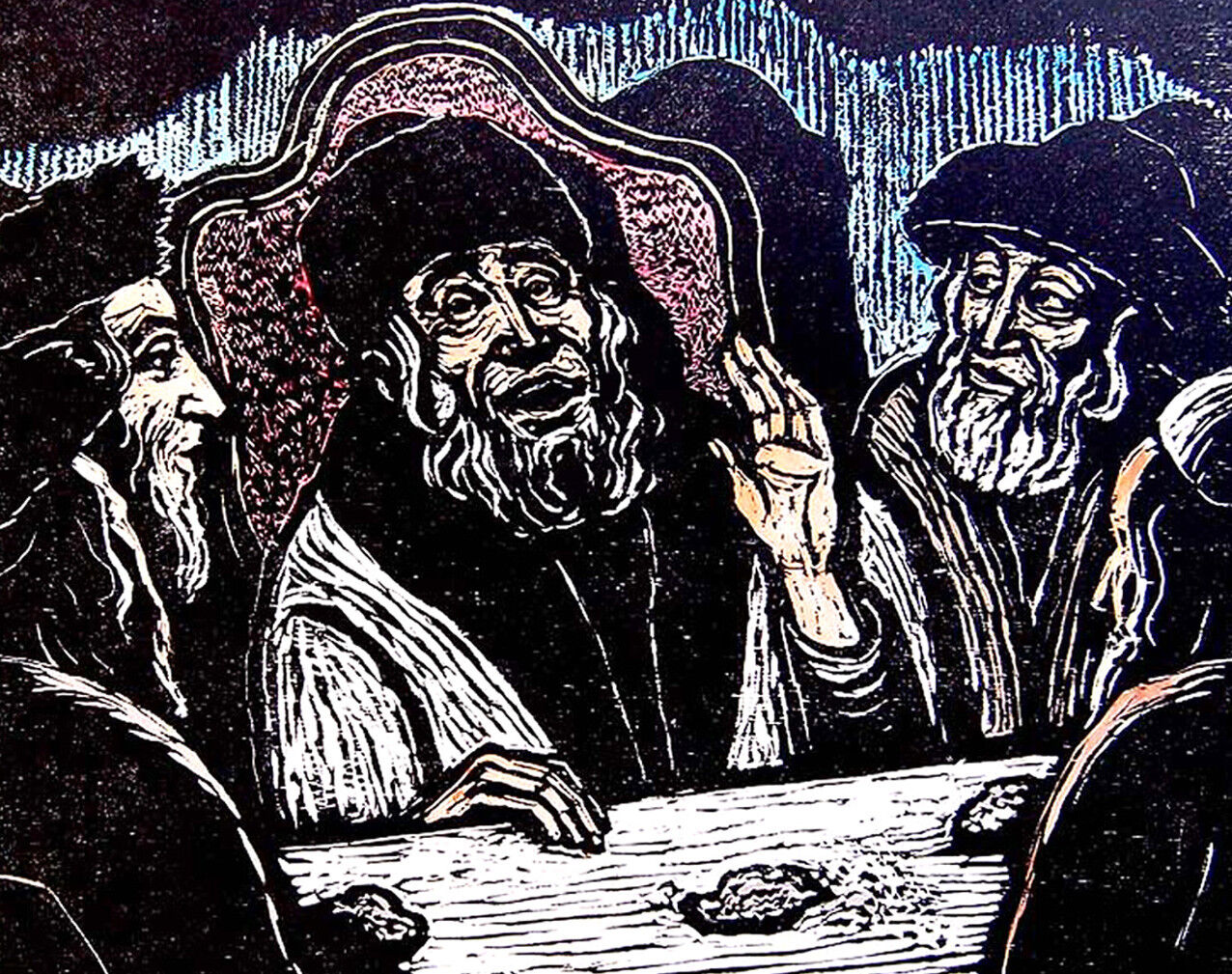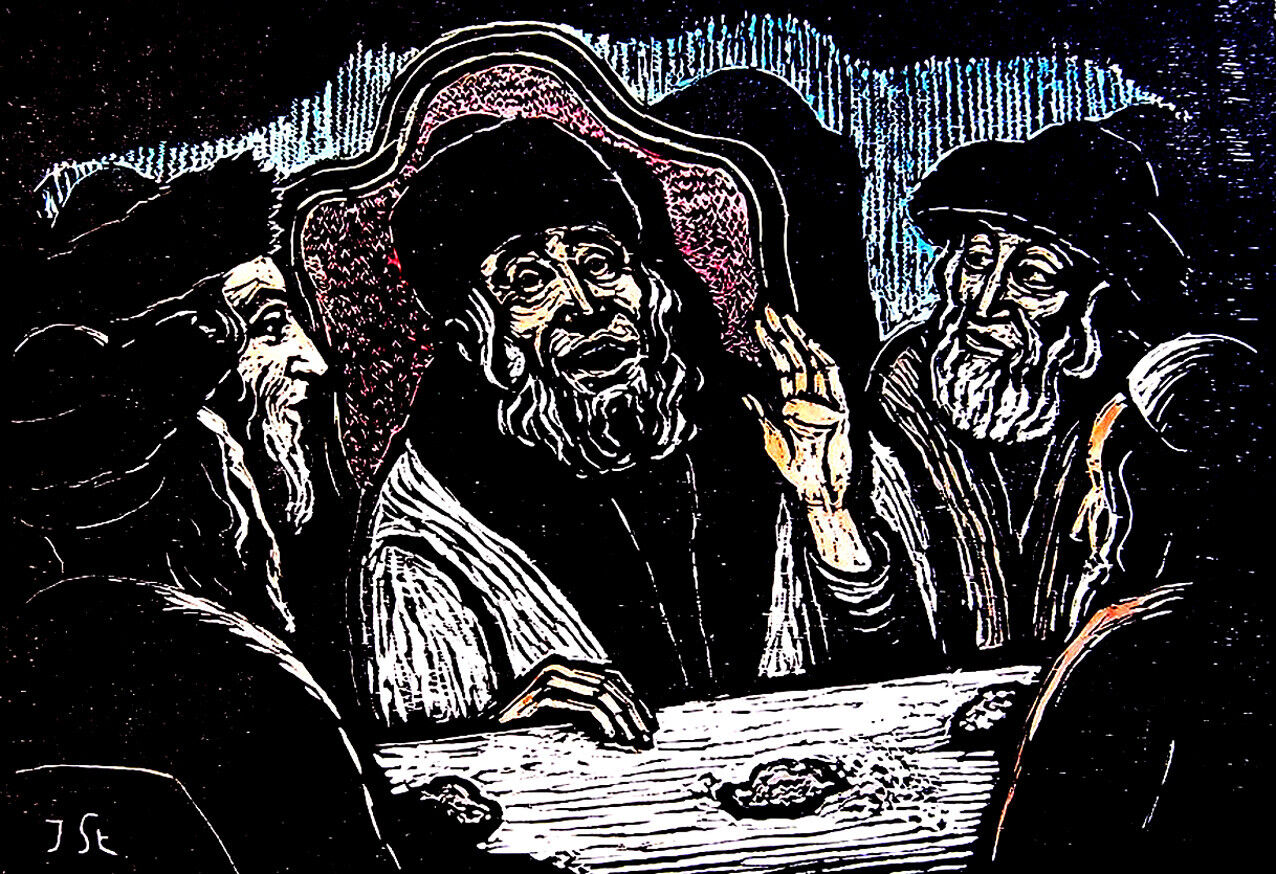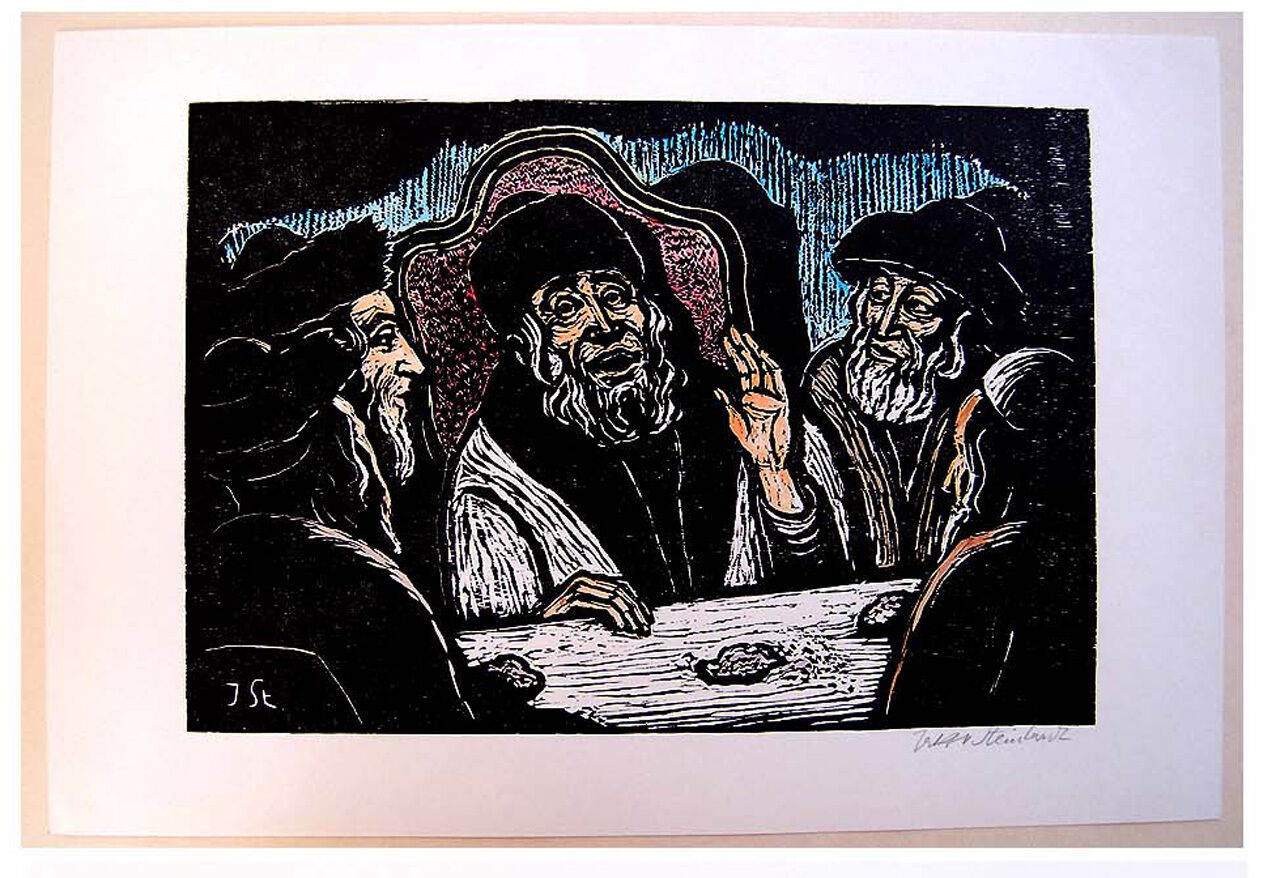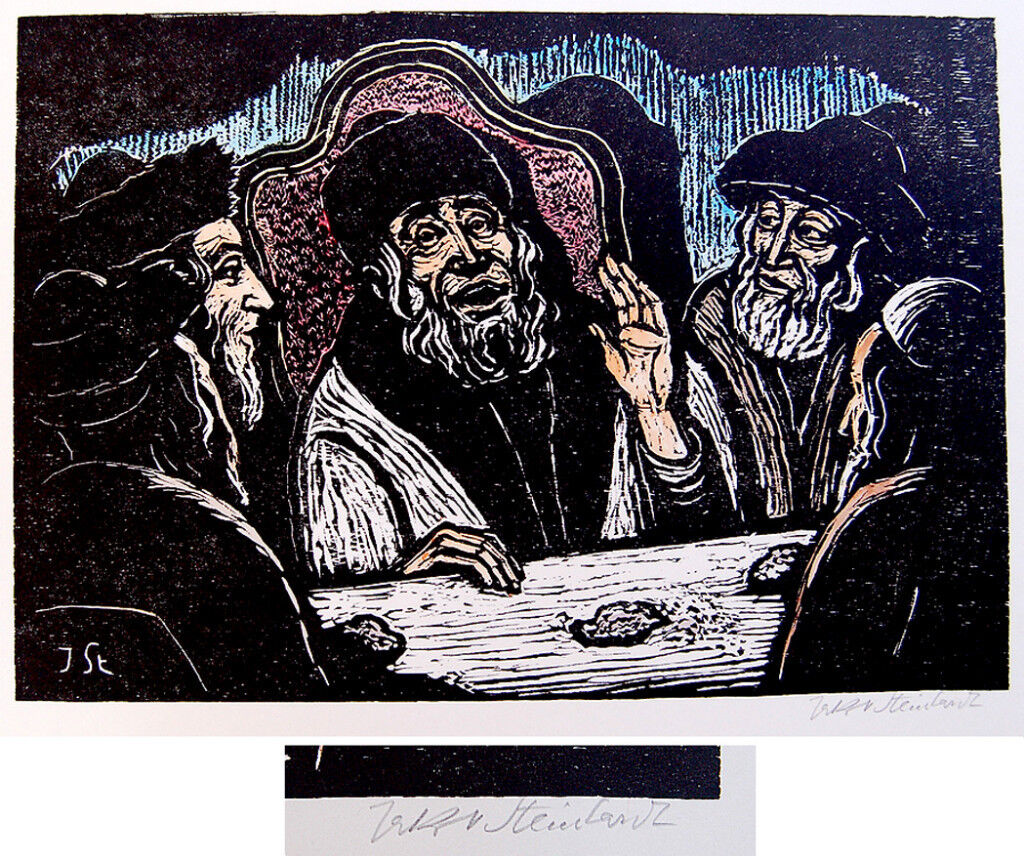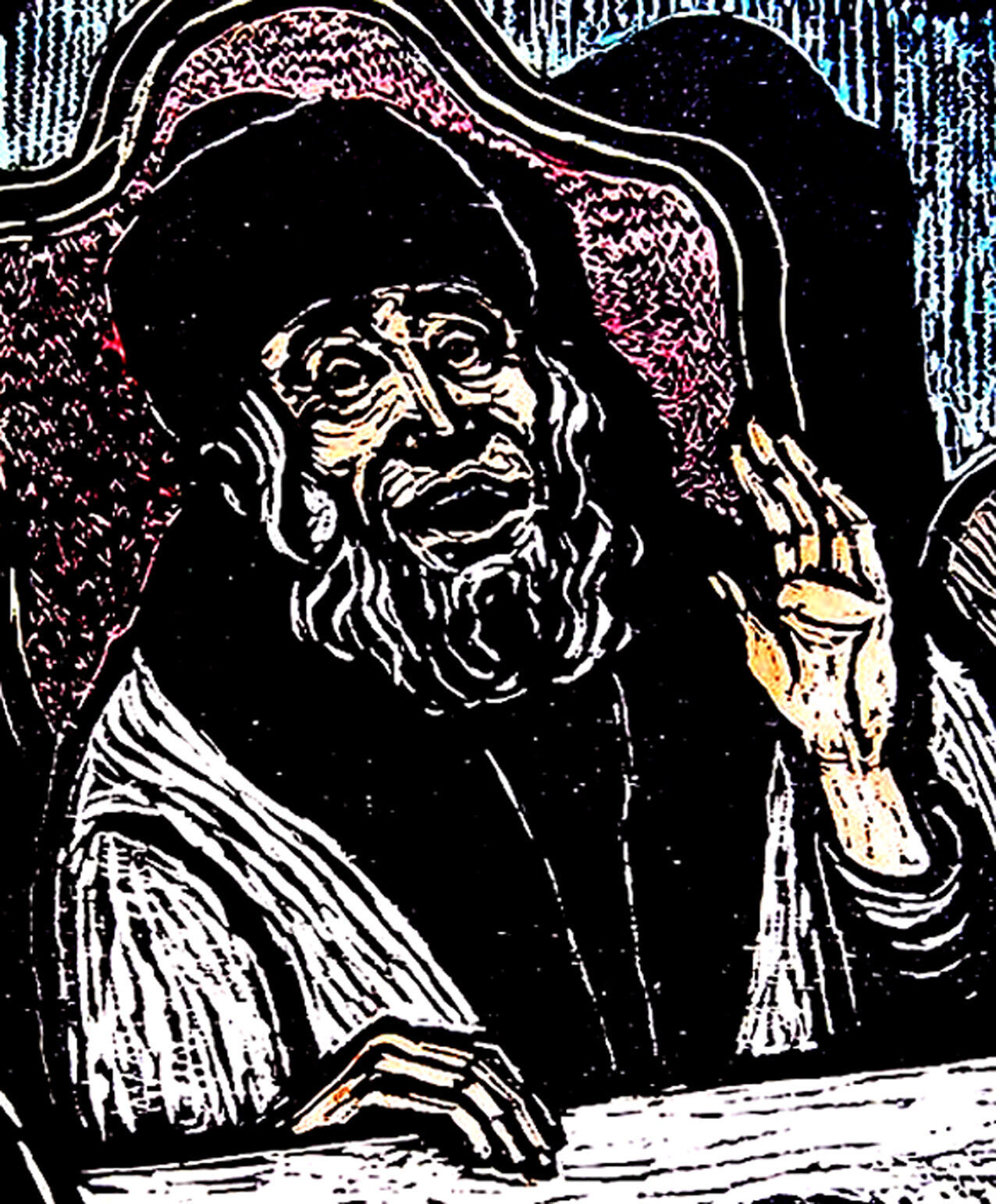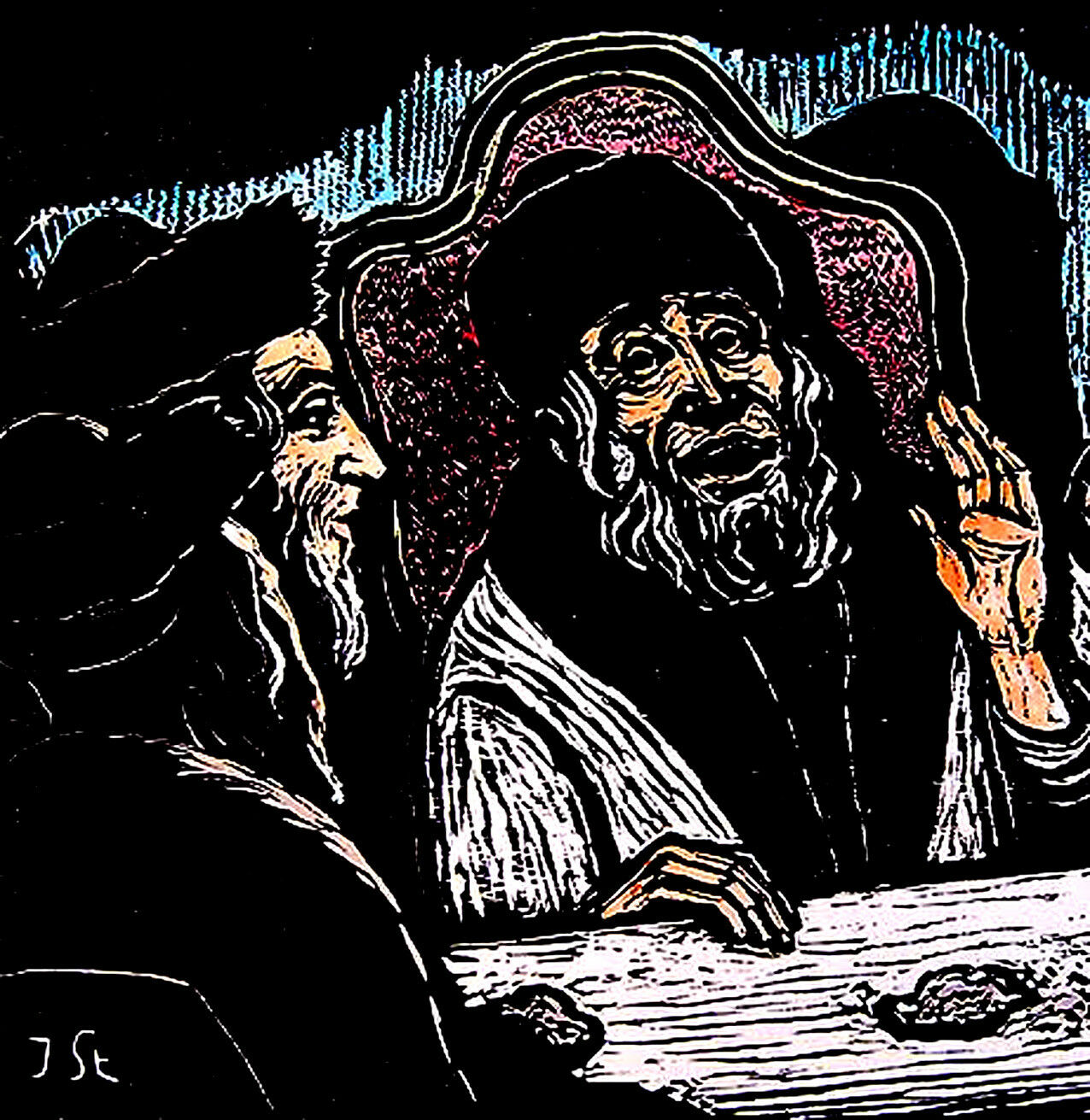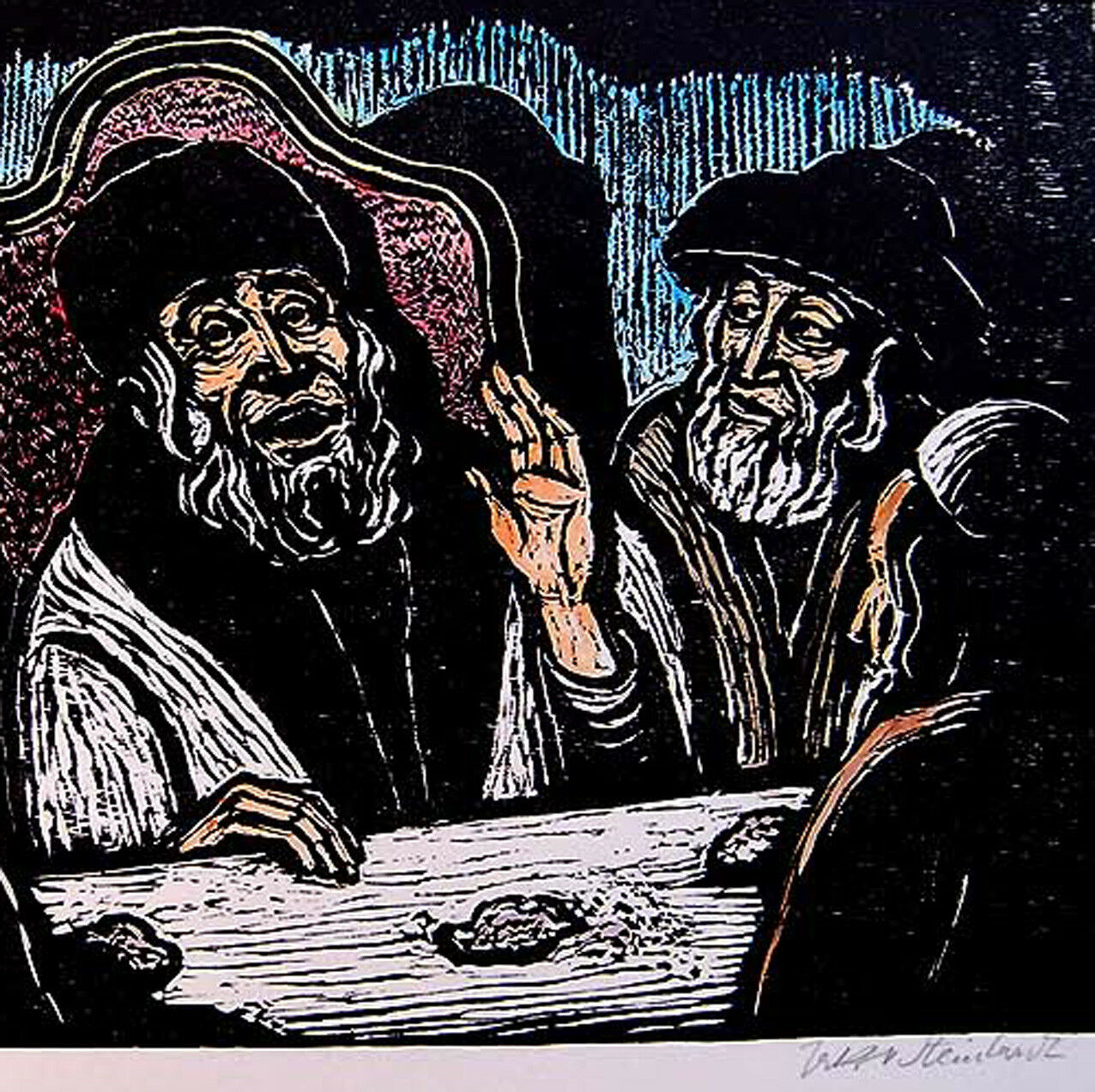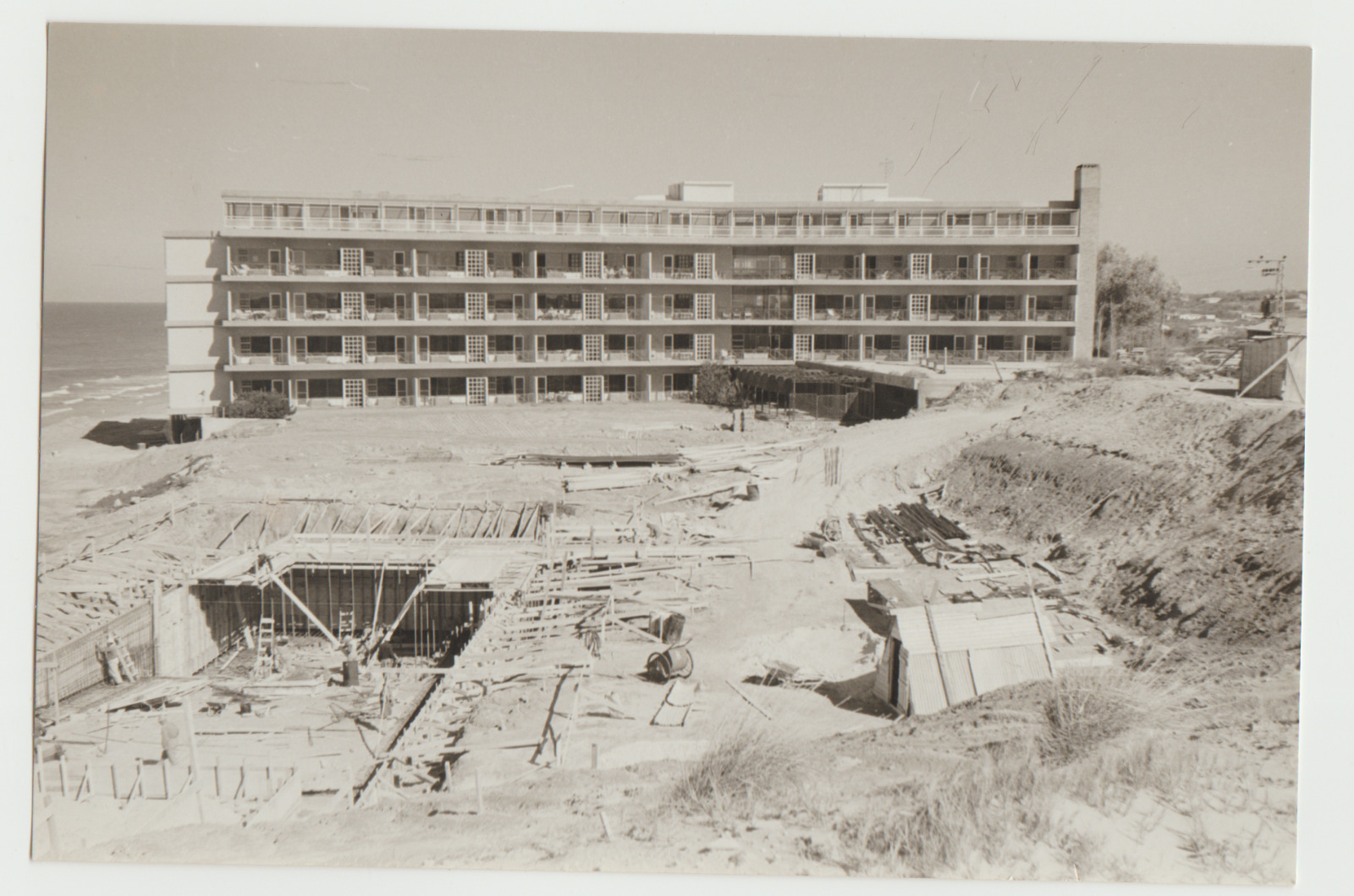-40%
STEINHARDT Hebrew HAND SIGNED Woodcut BEZALEL Judaica JEWISH HASSIDIM Israel
$ 119.01
- Description
- Size Guide
Description
DESCRIPTION:
Here for sale is QUITE RARE original HAND SIGNED and HAND TINTED woodcut of JACOB STEINHARDT . The woodcut , Depicting a scene of learning and debating CHASSIDIM in Beth Midrash or Synagogue was created in the early 1960's. STEINHARD signed with pencil " JACOB STEINHARDT " in addition to his signature in initials in the plate "JST". Printed on heavy stock. Sheet dimensions are
12.5 x 18.5 " while the actual WOODCUT size is 9.5 x 14" ( Excluding the pencil signature ). Excellent pristine condition.
( Please look at scan for an accuirate AS IS image ) .
The woodcut will be sent rolled in a special protective rigid sealed tube.
AUTHENTICITY
:
This is
a 100% fully guarateed ORIGINAL 1960's hand signed WOODCUT.
NOT a reproduction or a reprint
, It holds a life long GUARANTEE for its AUTHENTICITY and ORIGINALITY.
PAYMENTS
:
Payment method accepted : Paypal & All credit cards.
SHIPPMENT
:
Shipp worldwide via expedited insured trackable registered airmail is $ 29 . The woodcut will be sent rolled in a special protective rigid sealed tube.
Will be sent around 5 days after payment .
Bezalel Academy of Arts and Design is Israel's national school of art, founded in 1906 by Boris Schatz. It is named for the Biblical figure Bezalel, son of Uri (Hebrew:
בְּצַלְאֵל בֶּן־אוּרִי
), who was appointed by Moses to oversee the design and construction of the Tabernacle (Exodus 35:30). The Bezalel School was founded in 1906 by Boris Schatz. Theodor Herzl and the early Zionists believed in the creation of a national style of art blending classical Jewish/Middle Eastern and European traditions. The teachers of Bezalel developed a distinctive school of art, known as the Bezalel school, which portrayed Biblical and Zionist subjects in a style influenced by the European jugendstil (art nouveau) and traditional Persian and Syrian art. The artists blended
"varied strands of surroundings, tradition and innovation,"
in paintings and craft objects that invokes
"biblical themes, Islamic design and European traditions,"
in their effort to
"carve out a distinctive style of Jewish art"
for the new nation they intended to build in the ancient Jewish homeland.
The Bezalel School produced decorative art objects in a wide range of media: silver, leather, wood, brass and fabric. While the artists and designers were Western-trained, the craftsmen were often members of the Yemenite Jewish community, which has a long tradition of working in precious metals. Silver and goldsmithing had been traditional Jewish occupations in Yemen. Yemenite immigrants were also frequent subjects of Bezalel school artists. Leading artists of the school include Meir Gur Aryeh, Ze'ev Raban, Shmuel Ben David, Ya'ackov Ben-Dov, Ze'ev Ben-Tzvi, Jacob Eisenberg, Jacob Pins, Jacob Steinhardt, and Hermann Struck In 1912, the school had only one female student, Marousia (Miriam) Nissenholtz, who used the pseudonym Chad Gadya.The school closed down in 1929 in the wake of economic difficulties, but reopened in 1935, attracting many teachers and students from Germany, many of them from the Bauhaus school shut down by the Nazis. Jacob Steinhardt was a painter and woodcut artist. He was born in Zerkow (engl. Tserkov, pl. Żerków) in Posen, a former Province of Prussia. During the World War I he was a soldier in Poland and Lithuania. In Eastern Europe he came in contact with the Eastern Jewish religion and culture which deeply impressed him. It took great influence on his life and work. After his immigration to Palestine in 1933, he opened an art school in Jerusalem. He was Chairman of Bezalel Academy of Art and Design and also the Director of that school from 1953 till 1957. In 1966, Steinhardt became an honorary citizen of Israel. A year later, he painted his last self-portrait. He died on the 11th of February in 1968 at Nahariya. One of Steinhardts disciples was the artist Jacob Pins (January 17, 1917 Höxter). Der Künstler Jakob Steinhardt wurde 1887 in Zerkow, einer Kleinstadt in der damals preußischen Provinz Posen, geboren. Seine Eltern schickten ihn auf ein Gymnasium in Berlin, wo Steinhardt bei Verwandten unterkam. Während seiner Schullaufbahn verlor der Künstler mit 13 Jahren seinen Vater. Nach Abschluss der Gymnasialzeit (1906) kehrte Jakob Steinhardt in seine Heimatstadt zurück und erhielt durch Vermittlung des Direktors des Posener Museums ein Stipendium, mit Hilfe dessen er acht Jahre bis zum Beginn des 1. Weltkrieges studieren konnte. Bis 1914 reiste Jakob Steinhardt durch Europa und erweiterte seine Kunstkenntnisse, lernte auch neue Künstler kennen und gründete die Gruppe "Die Pathetiker". In den Kriegsjahren kam er als Soldat in Polen und Litauen mit der (ost-)jüdischen Religion und Kultur in Berührung, die tiefen Eindruck auf ihn machte und großen Einfluss auf sein weiteres Leben haben sollte. 1917, zum Ende des 1. Weltkrieges, erfolgte eine Ausstellung in der Berliner Secession seiner Kriegszeichnungen, die ein großer Erfolg wurde. Später entdeckt der Künstler die Technik des Holzschnitts, den er als wichtiges künstlerisches Ausdrucksmittel beibehielt. 1922 heiratete Steinhardt Minni Gumpert, worauf ein Jahr später die Tochter Josefa zur Welt kam. Jakob Steinhardt lebte weiterhin in Berlin, malte Stadtansichten, daneben entstanden auch noch graphische Mappenwerke und Buchillustrationen. Jacob Steinhardt mit Tocher Josepha und ihren Freunden, ca. 1942 1925 reiste Steinhardts nach Palästina, wohin er 1933 mit seiner Familie flüchten musste. Im Laufe des 2. Weltkrieges gab der Künstler seine Radiertechnik auf und widmete sich dem Holzschnitt. 1949 wurde er Leiter der Graphischen Klasse der Bezalel Kunstschule, die er von 1953-1957 auch führte. Ab 1955 wurde Steinhardt durch seine Ausstellungen weltweit bekannt und bekam zahlreiche Preise. 1966 wurde Steinhardt israelischer Ehrenbürger. Ein Jahr darauf malte er sein letztes Selbstportrait und starb am 11. Februar 1968 in Nahariya. Zu den Schülern von Jakob Steinhardt gehört Jacob Pins (17. Januar 1917 Höxter). Er stiftete seiner Geburtsstadt 2003 seinen Jacob Steinhardt (1887–1968) (Hebrew:
יעקב שטיינהרדט
) was an Israeli painter and woodcut artist. Jacob Steinhardt was born in Żerków, Germany (now Poland). He attended the School of Art in Berlin in 1906, then studied painting with Louis Corinth and engraving with Hermann Struck in 1907. From 1908 to 1910 he lived in Paris, where he associated with Henri Matisse and Théophile Steinlen, and in 1911 he was in Italy. When World War I broke out, he enlisted in the German army, and served on the Eastern Front in Poland and Lithuania, and then in Macedonia. After the war, he returned to Berlin, and in 1922 married Minni Gumpert. They immigrated to Palestine in 1933, after he was harassed by the German police, dominated by the Nazis who recently came to power. Steinhardt died in 1968. He is buried in Nahariya. Jacob Steinhardt worked mainly in woodcuts depicting biblical and Jewish subjects. He participated in the Berlin Secession and founded the Pathetiker Group. He was a member of the Bezalel school group. In 1934, Steinhardt opened an art school in Jerusalem. In 1948, he became Chairman of the Graphics Department at the Bezalel Academy of Art and Design. He served as director of the school in 1954-1957 The Jewish Museum Berlin houses the largest Steinhardt collection in the world, including numerous graphic artworks and unpublished documents donated by Josefa Bar-On Steinhardt, the artist's daughter. The museum owns paintings, several hundred print graphics, and a collection of books illustrated by the artist
Hasidim/Chasidim (Hebrew:
חסידים
) is the plural of Hasid (
חסיד
), meaning "pious". The honorific "Hasid" was frequently used as a term of exceptional respect in the Talmudic and early medieval periods. In classic Rabbinic literature it differs from "Tzadik"-"righteous", by instead denoting one who goes beyond the legal requirements of ritual and ethical Jewish observance in daily life. The literal meaning of "Hasid" derives from Chesed-"kindness", the outward expression of love for God and other people. This spiritual devotion motivates pious conduct beyond everyday limits. The devotional nature of its description lent itself to a few Jewish movements in history being known as "Hasidim". Two of these derived from the Jewish mystical tradition, as it could tend towards piety over legalism. As a personal honorific, both "Hasid" and "Tzadik" could be applied independently to a same individual with both different qualities. The 18th-century Vilna Gaon, for instance, while the head of Rabbinic opposition to the new Jewish mystical movement that itself became known as "Hasidism", was renowned for his righteous life. His scholarship became popularly honored with the formal title of "Genius", while amongst the Hasidic movement's leadership, despite his fierce opposition, he was respectfully referred to as "The Gaon, the Hasid from Vilna". In the aggregate, it may refer to members of any of the following Jewish movements: Hasidic Judaism, the popular following, mystical revival movement of 18th century Eastern Europe until today Hasideans, pietists or "Jewish Puritans" of the Maccabean period, around the 2nd century BCE Chassidei Ashkenaz, ascetic German mystical-ethical pietists of the 12th and 13th centuries Hasidic Judaism or Hasidism, from the Hebrew:
חסידות
Ashkenazic meaning "piety" (or "loving-kindness"), is a branch of Orthodox Judaism that promotes spirituality through the popularization and internalization of Jewish mysticism as the fundamental aspect of the faith. It was founded in 18th-century Eastern Europe by Rabbi Israel Baal Shem Tov as a reaction against overly legalistic Judaism. His example began the characteristic veneration of leadership in Hasidism as embodiments and intercessors of Divinity for the followers. Contrary to this, Hasidic teachings cherished the sincerity and concealed holiness of the unlettered common folk, and their equality with the scholarly elite. The emphasis on the Immanent Divine presence in everything gave new value to prayer and deeds of kindness, alongside rabbinical supremacy of study, and replaced historical mystical (kabbalistic) and ethical (musar) asceticism and admonishment with Simcha, encouragement, and daily fervour. This populist emotional revival accompanied the elite ideal of nullification to paradoxical Divine Panentheism, through intellectual articulation of inner dimensions of mystical thought. Hasidism comprises part of contemporary Haredi Judaism, alongside the previous Talmudic Lithuanian-Yeshiva approach and the Sephardi and Mizrahi traditions. Its charismatic mysticism has inspired non-Orthodox Neo-Hasidic thinkers and influenced wider modern Jewish denominations, while its scholarly thought has interested contemporary academic study. Each Hasidic dynasty follows its own principles; thus Hasidic Judaism is not one movement but a collection of separate groups with some commonality. There are approximately 30 larger Hasidic groups, and several hundred smaller groups. Though there is no one version of Hasidism, individual Hasidic groups often share with each other underlying philosophy, worship practices, dress (borrowed from local cultures), and songs (borrowed from local cultures). CHASIDIM, kă-sḗ'dīm (Heb., saints). A name employed at different periods of history to designate a sect of Pietists among the Jews. (1) Beginning in the time of the high priest Simon the Just (B.C. 300-270), a sect of Jews arose which was distinguished by its strict observance of ceremonial regulations. They firmly opposed all Hellenizing tendencies, and clung closer and closer to the ceremonies of Judaism. The members even suffered death in preference to transgressing the rites of their religion. They carried out to the letter the Sabbath laws and incurred loss and personal danger rather than extinguish a fire on that day; but they were no less stringent in carrying out the purely ethical features of the law, and were noted for their kindness and charity. Under Mattathias, the Hasmonean, they took part in the Jewish wars for independence, and were keen patriots, although lacking the ardor and spirit of the Hasmoneans themselves. In the days of John Hyrcanus, when Judæa was again independent, the Pietists withdrew into a life of retirement, and became the sect of Essenes (q.v.), while those of the Chasidim who were not willing to resign participation in political affairs branched off into the sect of Pharisees (q.v.). These Chasidim are mentioned in the Apocrypha (cf. I. Mac. ii. 42), as ‘Asidæans’ or ‘Hasidæans.’ Consult Hamburger,
Realencyklopädie für Bibel und Talmud
, Vol. II. (Leipzig, 1896). (2) In modern times the name Chasidim is applied to a sect which originated in Poland under the leadership of Israel of Miedziboz (died 1759), and after his death of Beer of Mizricz (died 1772). Israel was called ‘Baal Shem,’ ‘master of the name,’ because he professed to perform miracles by using the name of God, and the sect that followed him was characterized by a belief in miracles, and in the approach of the coming of the Messiah. They opposed Talmudic learning, because their leader was not a Talmudist. Their worship became characterized by its noisiness and the almost frenzied gyrations of its devotees. Beer was dignified with the title ‘Zaddik’ (righteous), and claimed to represent God upon earth. The members of the sect formed a kind of fraternity, and it spread rapidly, numbering about fifty thousand in 1770. The new division provoked great opposition on the part of the Talmudists, and in 1781, in Vilna. the Chasidim were declared to be heretics, but the sect continued to flourish, and to-day has a large number of adherents. With their antipathy to the Talmud on the one hand, the Chasidim combine an aversion to all modern culture on the other, their literature consisting of mystical, cabalistic works ebay147

